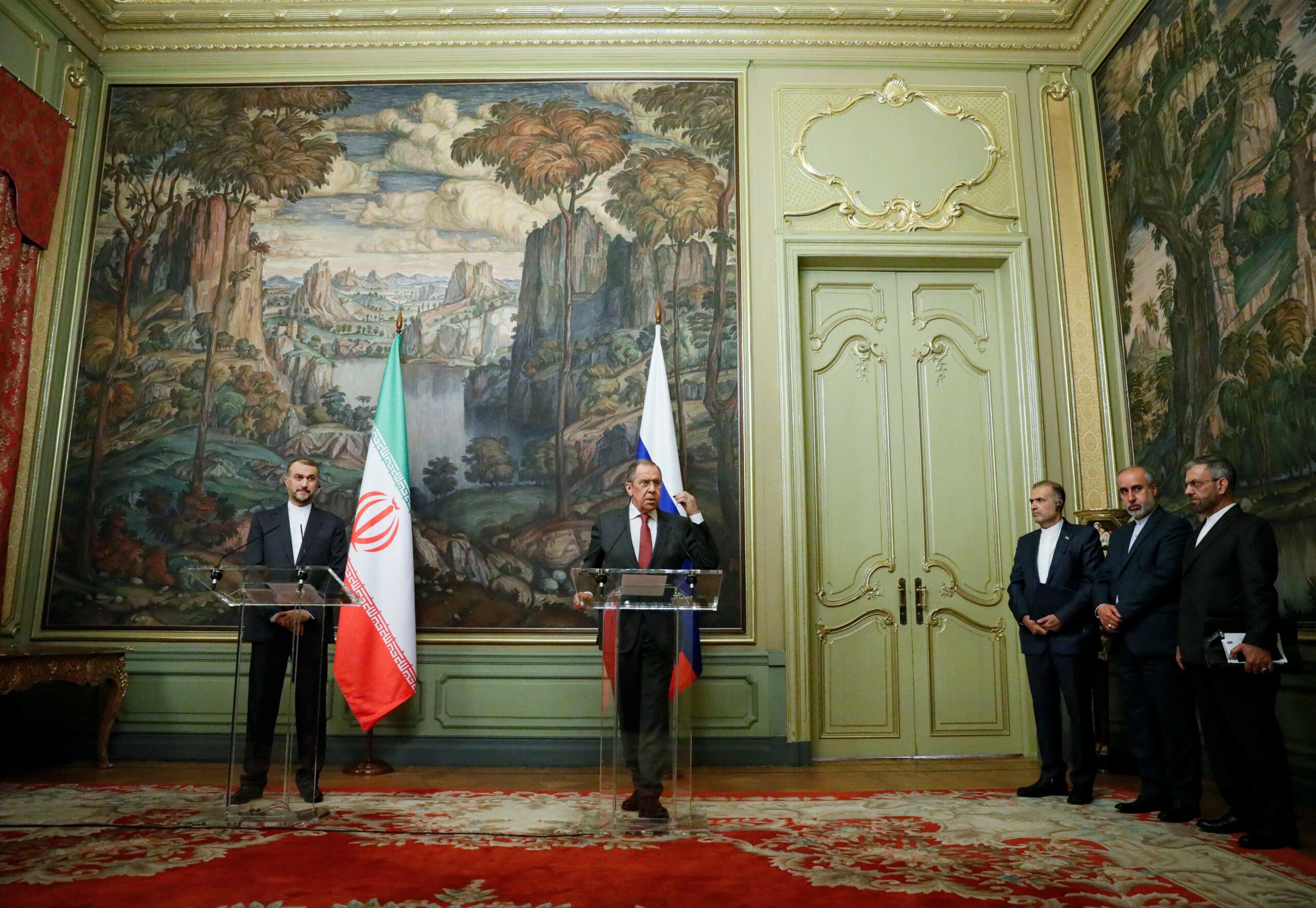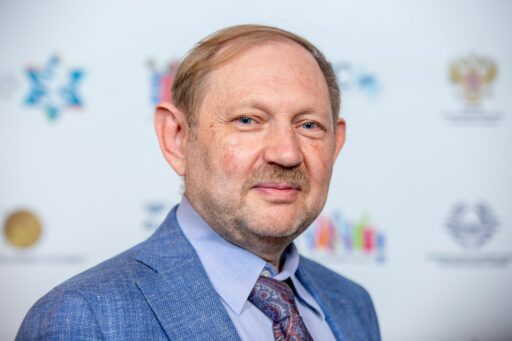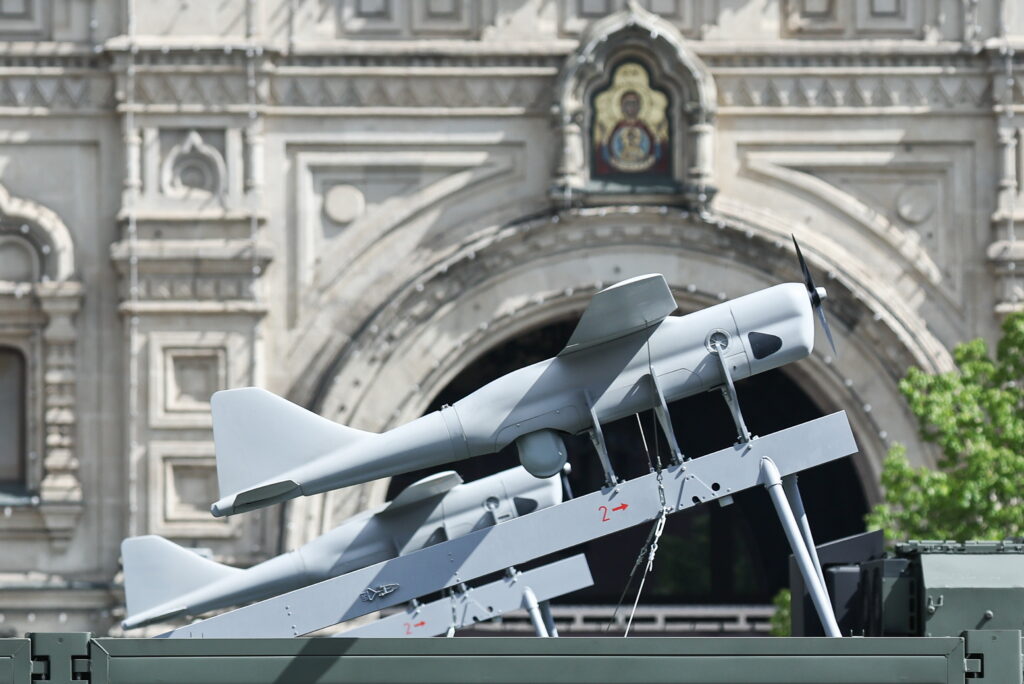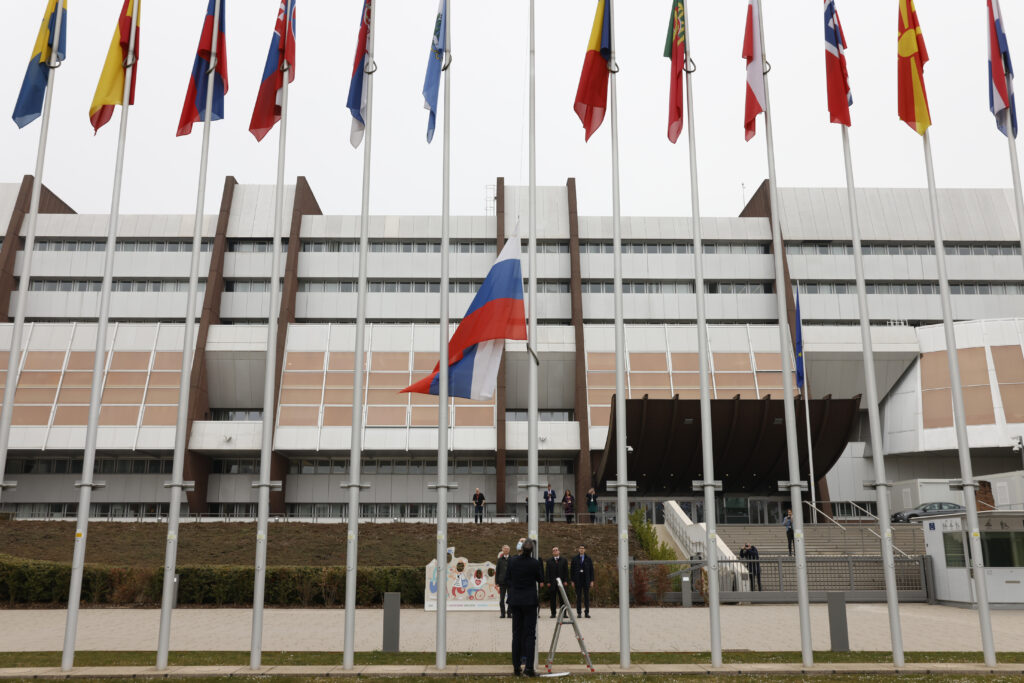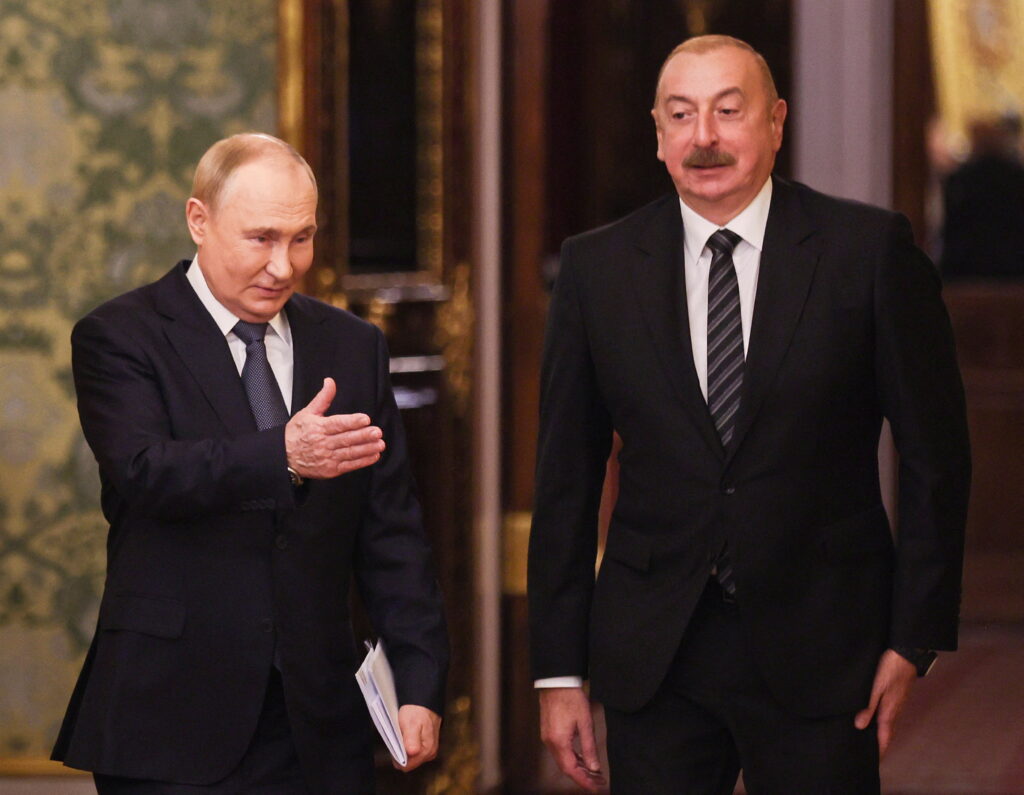The classical model of formal geopolitical blocs — as well as informal alliances that operate according to the scheme «the enemy of my enemy is my friend» and «the friend of my enemy is my enemy» — are of the past century. Present-day alliances are even more ambiguous and multifaceted; they form like sets of separate, touching or even intersecting unclosed political-military-diplomatic polygons, the apices of which are often formed by actors who rarely share a system of common values and identical interests, but who are ready to interact for certain tactical or strategic goals.
Allies, Enemies and Partners
The current armed conflicts waged across the territories of post-Soviet countries illustrate this point. They extend beyond military components toward powerful military-economic, diplomatic, and propagandistic elements. Some regional and global superpowers participate in these conflicts as direct or indirect actors. Over the past decade and a half, Russia and Iran, for instance, have been the initiators or undisclosed participants in the most high-profile conflicts of this kind. We should also add to Russia’s record its full-fledged armed invasion of Georgia and Ukraine and to Iran’s — its actual transformation over the past year into an active participant of the Azerbaijani-Armenian confrontation.
The reasons for such actions on the part of Russia and Iran lie in their claims for dominance in two macro-regions: the entire former Soviet space in the first case, and the eastern segment of the «greater Middle East» (Levant, Red Sea region and South Caucasus) in the second; they also both lay claim to a version of global leadership. The Russian version is represented by Vladimir Putin’s intention that he articulated back in 2007: namely, to reclaim the status of the world superpower for Russia as a legal successor and geopolitical heir of the USSR. This ambition was elaborated in the «updated» concept of foreign policy adopted at the end of March 2023, and summed up Russia as a «unique country-civilization, a vast Eurasian and Euro-Pacific power, a stronghold of the Russian world and one of the sovereign centers of world development.» Tehran, on its part, promotes its own doctrine of «global Islamic revolution». It buttresses these slogans by supporting Islamist terrorist groups across the Middle East and it deploys networks of influence in Muslim countries in Asia and Oceania, as well as within Muslim communities in Europe, Africa and Latin America.
The ambitions of global and regional dominance of the leaders of Iran and Russia determine their military policy, as well as their ideological justification and diplomatic support. These ambitions inform the corresponding choice of adversaries, allies and client states.
For a long while, bilateral relations between Moscow and Tehran could be called «competitive cooperation». A vivid example of this was their joint efforts to save the Assad regime in Syria. That led to a division of spheres of influence in that country, as well as their coordination of positions in the South Caucasus in the context of the Armenian-Azerbaijani conflict. However, after the full-scale invasion of the Russian army in Ukraine, these relations are turning into a closer alliance.
Iran — largely with Moscow’s consent — has begun to fill the vacuum of military and political influence in Syria and the South Caucasus that was left by the shift of the main focus of Russian activity to the Ukrainian front. Another area of deepening cooperation is Iran’s supply of combat drones and other strike weapons — such as components for military and civilian equipment that Russia badly needs and is currently running short of. Russia in return supplies Iran with aircraft, air defense systems, warships, and, according to some sources, even nuclear technology (more for civilian rather than for military use).
From Russia’s point of view, its war with Ukraine is not so much an armed conflict between the successor countries of the dissolved Soviet empire as it is a global confrontation with the United States and NATO. In this view, the territory of Ukraine is merely a battleground on which this confrontation is playing out and also one of the elements of this conflict. For Iran, Israel has become the symbol of the «collective enemy» of the Islamic Revolution and it regards Azerbaijan as a satellite and agent of the Jewish state in the region of the South Caucasus, which is geopolitically crucial for Tehran. Representatives of the Islamist regime in Iran keep drawing attention to this alleged «tandem» between Azerbaijan and Israel every chance they get.
In contrast to Russia’s actions in Ukraine, Iran has so far refrained from a direct military confrontation with Azerbaijan. Yet, judging by its activity in recent months, such a scenario also remains a possibility. For now, Tehran is limiting itself to a show of force on the border of the Azerbaijani exclave of Nakhichevan, while simultaneously trying to undermine the stability of the pro-Western secular regime in Baku by supporting and encouraging ethnic separatism and religious extremism in that country. The latter is carried out by the Islamic Revolutionary Guard Corps (IRGC) with a massive recruitment of Azerbaijanis, both residents in Azerbaijan and in Iran.
On the other hand, Iranian leaders are still interested in the lifting of Western economic sanctions, the return of the United States to the «nuclear deal» with Tehran and the deal’s eventual restructuring on better terms for Iran. That is why — unlike Russia —Iran does not declare Washington, the EU and NATO to be its immanent enemies. Instead, the focus of its anti-Western rhetoric is criticism of the «collective West’s» alleged support for Israel. At the same time, Moscow is still interested in preserving the Russian-Israeli agreements in Syria and maintaining more or less decent relations with Israel guided by the «those who are not against us are with us» principle.
Finally, there are some notable similarities between the relations of Russia and Iran with their closest regional allies, which in many ways are currently functioning as satellites. For Russia, Belarus is a prime example of one such «ally and satellite»; its interests have been declared by Moscow to be an integral part of Russia’s national security. Officially, Tehran routinely declares a similar position with Armenia. Over the past year, Iranian President Ebrahim Raisi has made at least eight statements about the importance of Iran’s relations with «close and friendly Armenia» and called for their full activation — a move that was enthusiastically welcomed by his Armenian counterparts. Officials in Yerevan also say they seek «to expand and deepen cooperation with Iran as much as possible and in all possible areas.»
Diplomacy and proxy economics in times of war
Belarus and Armenia, being the closest co-implementers of the geopolitical agenda in regions relevant to their patron states (in Ukraine and the South Caucasus), are simultaneously trying to pursue an independent foreign policy line (or at least the illusion of one) in relations with the West. For a long time now, President Alexander Lukashenka of Belarus has been considered to be one of the most effective strategists and tacticians for his penchant for skillfully walking the tightrope between different geopolitical centers of power in the post-Soviet space. However, the actual complicity of his regime in Russia’s armed invasion of Ukraine has dramatically reduced the room for acrobatic maneuver. As a result, today Lukashenka alternates between repeating Kremlin’s assertion that «Ukraine was preparing to attack first, while Russia simply delivered a preemptive strike,» and demonstrating his dissatisfaction with the way the war in Ukraine is unfolding while trying hard to produce alternative narratives that would deviate from Moscow’s official line and urging the West not to call Belarus a «co-aggressor.» And then, given the very lukewarm reaction in both America and Europe to his peacekeeping rhetoric and assurances of Belarus’ «non-interference» in the war in Ukraine, Lukashenka launches a large-scale anti-Western campaign in the media, at the core of which are accusations against NATO for preparing an «invasion of Belarus» (from Ukraine and Poland) meant «to destroy the country». One way or another, currently Minsk has no alternative to Russia as a force that can help it maintain financial and economic stability, diplomatic cover and ensure internal security of the ruling regime.
Yerevan demonstrates similar trends of foreign policy volatility as it is balancing between Russia, the West and China. As an integral part of the Moscow-Yerevan-Tehran axis, Armenia also occasionally demonstrates its willingness to strengthen the pro-Western vector of its foreign policy, which manifests itself, for instance, in its eagerness to replace the Russian presence on the demarcation line with Azerbaijan with UN or NATO forces, rather than Iran. At the same time, Armenian leaders continue to emphasize the country’s orientation toward Russia, from Prime Minister Nikol Pashinyan, who regularly asserts that Russia is «Armenia’s strategic partner and ally,» to parliamentary leaders who declare «that Moscow’s and Yerevan’s positions on fundamental international issues are close or coincide». The practical manifestation of such statements not only takes the form of numerous Armenian-Russian contacts at the highest level (according to official sources, since the beginning of the war in Ukraine, Pashinyan has visited Russia five times, met with Putin six times and talked to him 18 times by telephone), but also, for example, of the joint Russian-Armenian military training exercises held in September 2022, the agreement on military cooperation for 2023 signed in December the same year and ratified by the Commission on Defense and Security Issues of the Armenian parliament in February 2023.
The Russian Federation remains a critically important source of arms for Armenia; what’s more, to a large extent these arms are supplied at reduced prices or free of charge. Overall, according to the Stockholm International Peace Research Institute (SIPRI), Russia supplied 94% of all foreign military equipment received by Armenia in 2016−2020. According to the same data, Russian arms accounted for only 17% of Azerbaijan’s military purchases.
Nikol Pashinyan’s statement in mid-April 2023 that Armenia is ready to settle for the territory within the internationally recognized borders of the former Armenian SSR as of 1991 and recognize Baku’s sovereignty over Nagorno-Karabakh triggered a new round of discussions about the prospects for a «reasonable balance» in Yerevan’s foreign policy strategy. Some observers believe that with the disappearance of the Karabakh issue in the Russian-Armenian discourse and with the majority of Armenians confident that the Kremlin will become an unreliable ally who abandoned Armenia at the most crucial moment, the relations between the two countries «will inevitably undergo some revision» (i.e., this geopolitical partnership will lose its importance). Others, however, suggest that instead of rushing to conclusions we should pay close attention to the fact that from the point of view of Yerevan, the preferable candidate in the «casting» for the role of the new main guarantor of security is not the United States, UN, China or NATO yet, but Iran. In addition, Russia is only changing the style and quality of its presence in the South Caucasus polygon of geopolitical interests, but is not withdrawing from this scheme altogether. The close Russian and Iranian partnership that includes the transfer of weapons and other military resources and materials, which is often carried out using the channels of their satellites, remains the essential point of this arrangement.
Thus, despite the reorientation of Armenia toward the West broadcast by Nikol Pashinyan, Armenia still serves as the military and logistical support of the Russian-Iranian alliance, a major hub for the supply of goods to Russia, bypassing Western sanctions and as a military and technical supply base for the Russian forces operating against Ukraine. In fact, we are talking about the continuation of the previous course, specific instances and illustrations of which have been repeatedly made public. For example, in September 2022, the U.S. Department of the Treasury released information about the participation of an Armenian company in the procurement of foreign equipment for the Russian military industry, and a month later, Bloomberg published evidence of supply lines running through Armenia of European equipment components used in the Russian military equipment.
The Lukashenko regime, itself the target of Western sanctions, plays a similar role in supplying Russia with Iranian (and Chinese) weapons and military ammunition. According to some reports, the design of the schemes to circumvent such sanctions was part of the mission undertaken by the Belarusian leader on behalf of the Russian president during his visits to China in late February and early March 2023 and to Iran less than two weeks later. While the visit of the Belarusian leader to China was also an attempt to demonstrate that his regime is actually not as isolated as is believed in the world and at home, the visit to Iran looks like one of the most significant components of the Roadmap signed by Lukashenka and Raisi, which outlines the contours of cooperation between the two countries until 2026.
Of course, the export-import capabilities of Belarus and Armenia are not limited to the channels for supplying sanctioned goods to Russia and Iran. Companies from Central Asia, Georgia, Turkey and the UAE are involved in similar schemes (especially in the supply of microchips and other electronic devices, primarily American, German, Dutch and Japanese ones, which are essential for the production of sophisticated weapons). China continues to carry out similar supplies — including camouflaging them as spare parts for household appliances — on the almost pre-war scale and volume.
The peculiarity of the situation of Armenia and Belarus is that the role of the platform for the transfer of sanctioned direct and dual-use goods to Iran and Russia, is only one of the built-in elements of their strategic partnership with these countries. The consequences of the new mechanism for coordinating the application of sanctions against «rogue states» may be particularly painful for the subjects of all these overlapping alliances.
Whether Tehran, Moscow, Yerevan, and Minsk will be able to find a «creative solution» to continue their previous practices, or will be forced to adapt their policies to the new situation that is changing, although slowly, not in their favor, remains to be seen in the nearest future.
